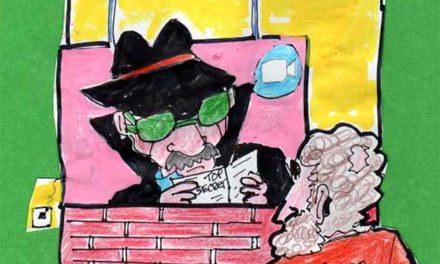Traffic Light Calibration—Yes, It’s Really a Thing
Contemplating the mysteries of earthbound signals
By Ed Goldman
I learned many years ago, when I first moved to California’s capital to work for the city manager, that in midtown, at least, the traffic signals were timed—calibrated to a certain speed that, curiously, was less than that of the posted speed limit. If you drove at a steady 24.8 miles per hour, or something like that, in a posted 30 mph zone, you could drive about 20 blocks without hitting a single red light.
Distress Signal
This could cause you to suffer a bout of irrational depression and might make you feel your life’s been a cosmic joke, your family dog will morph in the middle of the night into Stephen King’s Cujo and your children will head en masse to the DMV or online to permanently change their surname.
The neighbors usually made the tactical error of appointing a physician, attorney or professor from among them to carry the ball in the ensuing presentation—not realizing that some of the council members were predisposed to despise anyone who made more money than they did.
But there were nine people on the city council, not to mention an array of staff members. The latter could be expected to align their loyalties with their symbolic bosses (I say “symbolic” because they actually worked for the city manager—but I’ve never met one who didn’t instruct his or her staff, “Keep the council happy,” since these people were his actual bosses). To recap, the neighborhood’s elite army was doomed to meet its Waterloo.
I mention this because one night, I asked Mr. Frink why the traffic signals on only three crosstown streets were in sync, and the others seemed to have anarchy on their random, metallic minds. He got pretty indignant and explained to me very carefully how traffic design works, that there was nothing remotely random about any of the signals’ timing.
Since we’d arrived at the meeting at the same time, I’d seen him arrive in a city car. But a little later, he left in a huff. I was hoping he caught all the green lights on his way home.
Ed Goldman's column appears almost every Monday, Wednesday and Friday. A former daily columnist for the Sacramento Business Journal, as well as monthly columnist for Sacramento Magazine and Comstock’s Business Magazine, he’s the author of five books, two plays and one musical (so far).
Yes, Virginia
A Weekly Blog by Virginia Varela
President and CEO, Golden Pacific Bank
photo by Phoebe Verkouw
MUSICAL CHAIRS
To everything there is a season,” according to Ecclesiastes 3:1 and “Turn Turn Turn” by The Byrds. That includes leadership.
I’m very proud of the Sacramento Philharmonic and Opera (SP&O). Throughout the past few years it’s developed into a premier arts organization, becoming one of our community’s cultural gems.
Now, add some exciting, recently released news: Mr. Giuliano Kornberg will take over as SP&O Executive Director in February 2022, as, after seven years in this Executive Director role, Ms. Alice Sauro will move into a consulting role and continue to support Giuliano and our organization.
Wow. This is amazing. Over the past few years Giuliano has proven himself as a well-known and admired young, fierce coming-of-age Sacramento leader. Alice, with her limitless talents as leader, businesswomen and musician, created a pipeline of talent so Giuliano was ready to take up new challenges as they became available.
Wow again!
Meanwhile, there was a change in leadership of the SP&O Board of Directors. Recently I ended a three-year term as President of the Board and turned over the reins to my competent friend and colleague Mr. John Shirey.
Wow 3.0!
There is something called natural momentum, a person at the right place at the right time for the right situations. Succession planning helps with such situations by preparing candidates for new opportunities. But there is no replacement for the natural and magical sense of timing and need for leaders that is part of every organization’s development in the world of humans.
I love music and am proud to be a part of the Sacramento Philharmonic and Opera serving as a Director for several years. I’m excited to see Giuliano succeed Alice after nearly seven wonderful years of work in turning our beloved Philharmonic & Opera into one of our region’s leading arts institutions.”
During Alice’s tenure, the SP&O made a dramatic turnaround. With sold-out concerts, fundraising records, multiple consecutive years of balanced budgets, and new performance and partnership opportunities previously unrealized, we are a tremendous success story for Sacramento. We would not be in this strong artistic and financial position without Alice, and we are tremendously grateful for all she has done.
Now is the time for Giuliano and John. Good luck, my friends. Keep the cultural fire burning. Now is your season. And may I just add a fourth “Wow!”
sponsored content













